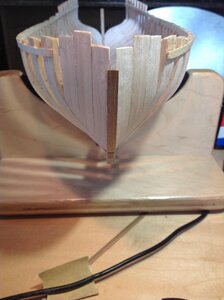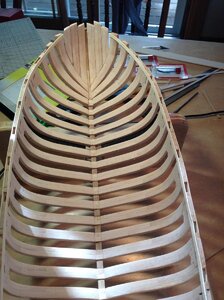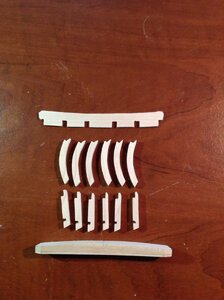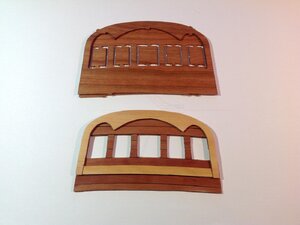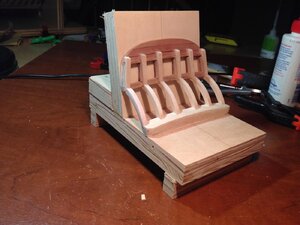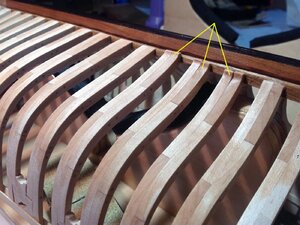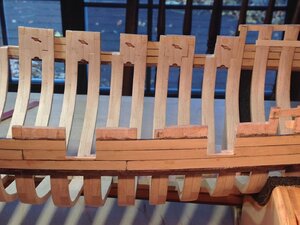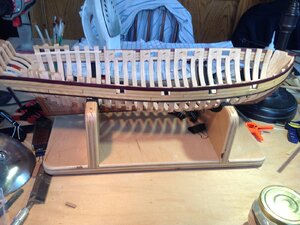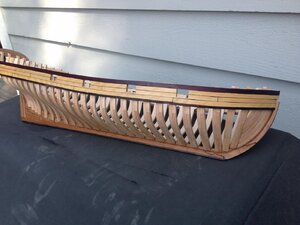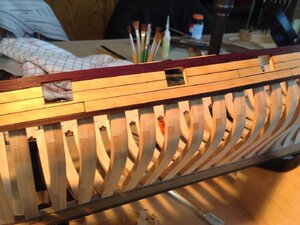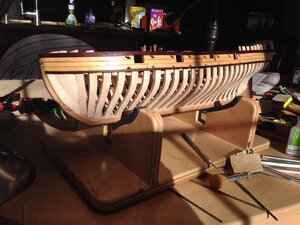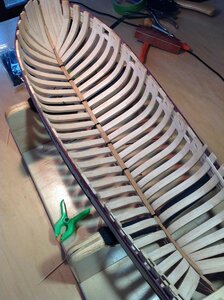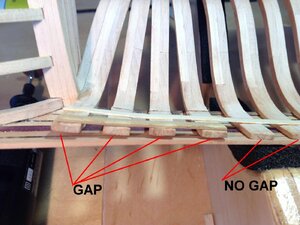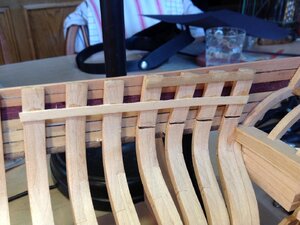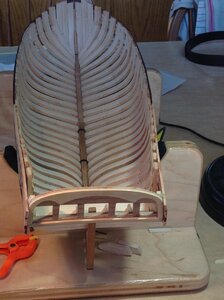All of the frames are glued to the rising wood and the deadwood except the last two, P and Q. I had to remake the two pair of forward cant frames, because I didn't like the way they fit. They are much better now, and the fairing of the hull will be easier. I did rum into trouble with frame P, the next to the last one. Basically the kit pieces made for a set of frames that tended to "curl in" rather than line up with the upper futtocks of the frames that come before. The size of the finished frame doesn't leave enough excess wood to fair frame P into the same plane as the frames before. So I used the beveling template to make a new pair of frames, and beveled them to fit the hull curves at that station. Cutting out the futtocks and gluing them together is easy...fitting the frame in place without an accurate beveling template is hard. It took me a couple of hours to fit the new frames, but I like the end result.
The first photo shows the old frame P. It is the first one. Notice how the upper futtock is rotated inward. The second and third photos shows the new frame P before beveling. The forward edge of the frame is high compared to the frame in front, and the uppermost parts need to be shaped. The last three photos are of the final pair of frames P in position in the jig. The uppermost part flows more smoothly and the inside and outside surfaces are fair compared with the frame before. A great improvement. Once the poly is dry I'll glue this frame in place, fair the upper hull and install temporary ribbands to the frame tops. The model will be ready to come out of the jig.
View attachment 165173View attachment 165174View attachment 165175View attachment 165176View attachment 165177View attachment 165178







